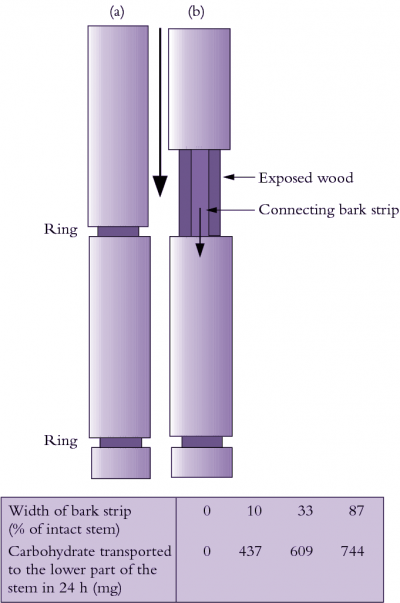Fig_p_5.15.png

Figure 5.4 The role of bark (phloem) in sugar movement in plants. Mason and Maskell (1928) demonstrated that removing a complete ring of bark (a) while leaving the wood (xylem) intact prevented downward movement of sugars. When a strip of bark was retained between upper and lower stem parts (b), sugars flowed downwards in direct proportion to the width of the remaining bark
Photoassimilate, mainly in the form of sucrose, is loaded into phloem of photosynthetically active leaves for long distance transport to nonphotosynthetic sink tissues. Figure 5.4 shows that assimilate transport occurs in phloem but not xylem. Key characteristics of phloem transport along with its chemical composition and regulation are described below.
